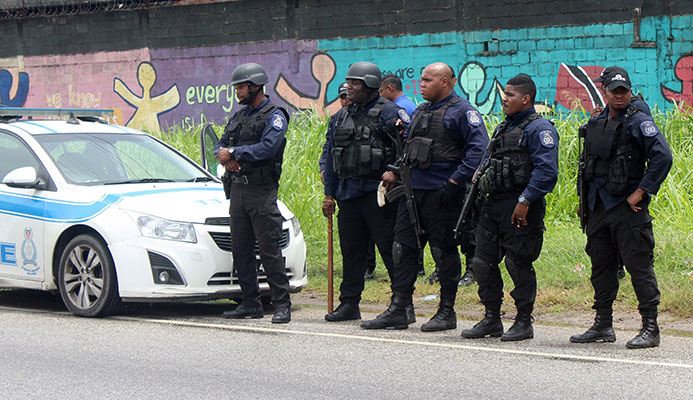PHYSICALLY fit police officers have greater capabilities on the beat and in emergency situations, says Commissioner of Police Gary Griffith, who said he intends to look into fitness assessments in the police.
Speaking with Newsday yesterday, Griffith said physical fitness is an asset to police.
“Each arm of the protective services will develop physical fitness requirements and assessments to suit their needs. They have their own structure and we (the police) have ours. I am aware that in some police stations there are gymnasiums for the officers to use.
“Optimum physical fitness not only supports a healthier lifestyle, but also provides the basis for increased physical capacity and output on the job.”
Griffith also urged police officers to do their best and maintain a high level of fitness in their lifestyle to ensure optimum performance in the field.
“Police officers do have physically strenuous jobs at times, and it is crucial that they are in top physical shape to be better able to perform their jobs to the best of their abilities. The physical fitness of a police officer is an essential part of their survival and longevity in service.”
He said the job of a police officer is a high-stress one and hence physical activity is one key element to de-stressing, as well as to maintaining high-level functionality.
Griffith also said he is intent on utilising secondary crime-prevention methods including various aspects of sport to strengthen the links between the police and various communities.
Newsday also spoke with president of the Police Social and Welfare Association Insp Michael Seales who said despite projects and campaigns aimed at improving healthier lifestyles among officers, there was a noticeable increase in the number of unfit officers on the beat.
He said, in recent times the number of sick-leave taken by officers has increased from 1000 to 7000 over a four-year period. He said this was indicative of health problems.
“The fitness check-ups and medicals are not a mandatory requirement for general police officers, but it is a routine procedure for certain units and divisions given the strenuous work they are involved in.
“There has been an increase in the prevalence of out-of-shape officers, but we are doing what we can on our part to try and promote a healthier, more active lifestyle.”
Seales said all police stations constructed within the last five years were equipped with exercise rooms and the association’s Last Man Standing event in Chaguaramas earlier this year, was intended to encourage more junior officers to engage in physical activities.
He said lifestyle diseases such as diabetes and hypertension were also particularly apparent among younger officers than seniors.
ORIGINAL STORY:
PHYSICALLY fit police officers have greater capabilities on the beat and in emergency situations, says Commissioner of Police Gary Griffith, who said he intends to look into fitness assessments in the police.
Speaking with Newsday yesterday, Griffith said physical fitness is an asset to police.
"Each arm of the protective services will develop physical fitness requirements and assessments to suit their needs. They have their own structure and we (the police) have ours. I am aware that in some police stations there are gymnasiums for the officers to use.
"Optimum physical fitness not only supports a healthier lifestyle, but also provides the basis for increased physical capacity and output on the job."
Griffith also urged police officers to do their best and maintain a high level of fitness in their lifestyle to ensure optimum performance in the field.
"Police officers do have physically strenuous jobs at times, and it is crucial that they are in top physical shape to be better able to perform their jobs to the best of their abilities. The physical fitness of a police officer is an essential part of their survival and longevity in service."
He said the job of a police officer is a high-stress one and physical activity is one key element to de-stressing, as well as to maintaining high-level functionality.
Griffith also said he is intent on using secondary crime prevention methods including sport to strengthen the links between the police and various communities.

